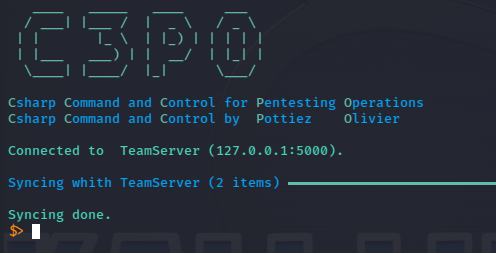Throughout my journey in the field of cybersecurity, the decision to create my own C2 framework emerged as an inevitable step. As I delved deeper into offensive security practices, the need for a customized tool that aligns with my specific goals and requirements became increasingly apparent. By embarking on the development of my own C2 framework, I seize the opportunity to deepen my knowledge, enhance my technical capabilities, and gain a profound understanding of the intricate dynamics of command and control systems.
Why C#?
With over 19 years of experience as a software developer in the C# environment, leveraging the power of C# for my custom C2 project is a natural choice. Moreover the widespread adoption of .NET in the Windows ecosystem provides a solid foundation for building robust and scalable offensive security tools.
Learning, learning and learning !
One of the primary motivations behind developing my own C2 framework in C# is the invaluable learning experience it offers. By embarking on this project, I aim to gain a deep understanding of the intricacies involved in creating a robust command and control system. From designing the architecture to implementing communication channels and command execution mechanisms, every step presents an opportunity for growth and knowledge acquisition.
Throughout the development process, I anticipate encountering challenges and obstacles that will push my problem-solving skills to the limit. Overcoming these hurdles will provide invaluable insights into the complexities of offensive security operations. By analyzing and resolving issues related to scalability, stealthiness, and security, I will enhance my skills as an offensive security learner.
Developing my own C2 framework grants me a deep understanding of its inner workings, allowing me to truly embody the offensive security mantra “Know your tools and what they are doing”. By crafting each component and understanding the code behind the framework, I gain unparalleled insight into the mechanisms that enable remote control and compromise.
This level of customization and freedom enables me to experiment, iterate, and fine-tune the framework according to my evolving knowledge and objectives. Through this hands-on experience, I can gain a profound understanding of the inner workings of a C2 system and develop a unique perspective on offensive security practices.
Main Functionalities
Here is an non-exhaustive list of all the functionalities I would like to integrate into this C2 project :
Command Execution: The ability to send commands from the C2 server to compromised systems and execute them on target machines.
Communication Channels: Establishing secure and covert communication channels between the C2 server and compromised systems, allowing for bi-directional communication and data exchange.
Payload Management: Generating, Uploading, downloading, and executing files on compromised systems, providing capabilities for deploying additional tools, scripts, or malware payloads.
Data Exfiltration: Collecting and exfiltrating sensitive information from compromised systems back to the C2 server, enabling the extraction of valuable data from targeted networks.
Persistence Mechanisms: Implementing techniques for maintaining long-term access to compromised systems, ensuring that the C2 framework can re-establish control even after system reboots or network disruptions.
Post-Exploitation Actions: Performing various post-exploitation activities, such as privilege escalation, lateral movement, and pivoting, to expand the compromise and gain control over additional systems in the target network.
Reporting and Logging: Capturing and storing relevant information, logs, and events from compromised systems, enabling analysis, monitoring, and forensic investigations.
Flexibility and Extensibility: Offering the ability to extend the framework’s functionality through plugins, modules, or scripting capabilities, enabling customization and adapting to different attack scenarios.
Operational Security (OPSEC): Implementing measures to ensure the stealthiness and security of the C2 infrastructure, such as encryption, obfuscation, and traffic manipulation, to evade detection and enhance operational security.
Inspirations and links
I started this journey by taking the excellent course C2 Development in C# from Rasta Mouse on the Zero Point Security platform.
My developments are freely inspired by the SharpC2 and Covenant Projects.
I also found inspiration while using existing C2. Exploring these established solutions gave me interesting ideas to integrate in my own C2 (especially by using Cobalt Strike in my recent CRTO certification).
Every part of the development of this C2 involves also a lot of others sources (videos, blog posts and others) that i found on the internet, and I will try mention them in upcomming specific articles.
Final Thoughts
As I progress in the development of my C2 framework, I am eager to share some interesting episodes and milestones encountered along the way.
Stay tuned for the upcoming posts that will shed light on the challenges, breakthroughs, and lessons learned during this project.


